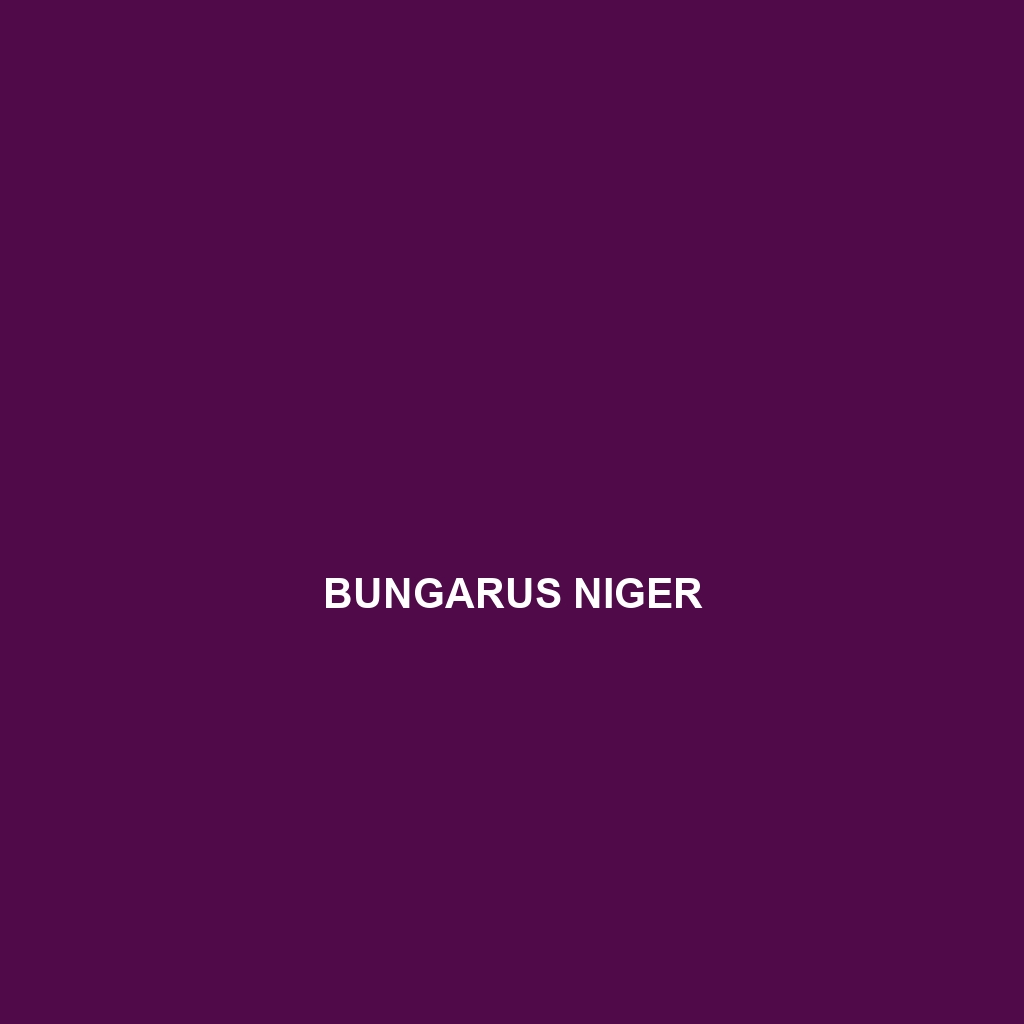Bunopus tuberculatus, commonly found in arid regions of the Arabian Peninsula and North Africa, is a nocturnal insectivore characterized by its robust body covered in tubercles, flattened head, and unique locomotion. Classified as vulnerable due to habitat loss, this species plays a vital role in controlling insect populations and serves as a food source for larger predators.
Tag: reptile conservation
Bungarus wanghaotingi
Explore the elusive Bungarus wanghaotingi, a striking nocturnal snake native to southern China and northern Vietnam, characterized by its smooth, glossy scales in black and yellow or cream bands. This vulnerable species plays a crucial role in its ecosystem, feeding on small mammals and reptiles, while its unique hunting strategies and neurotoxic venom make it a formidable predator.
Bungarus sindanus
Bungarus sindanus, commonly known as the Sindh krait, is a medium-sized, venomous snake native to the grasslands and scrub forests of the Indian subcontinent, particularly found in Pakistan, India, and parts of Nepal. With its striking black or dark brown body adorned with yellow or white bands, this nocturnal predator plays a crucial role in maintaining ecological balance by controlling small mammal populations.
Bungarus sagittatus
<h2></h2> Discover the stunning Bungarus sagittatus, or Eastern Krait, a beautifully banded snake native to Southeast Asia. This nocturnal predator, measuring 1 to 1.5 meters, is recognized for its potent neurotoxic venom and plays a crucial role in maintaining ecosystem balance.
Bungarus niger
Discover the Bungarus niger, or Black Krait, a striking snake known for its glossy black scales and distinctive yellow or white banding. Commonly found in Southeast Asia, this nocturnal predator plays a vital role in controlling small mammal populations, boasting potent venom that makes it one of the most recognizable and effective hunters in its ecosystem.
Brookesia valerieae
Brookesia valerieae, also known as the leaf chameleon, is a small reptile measuring 2.5 to 3.5 cm, found in Madagascar's montane rainforests. Notable for its effective camouflage, distinctive spiky scales, and diurnal behavior, this vulnerable species primarily feeds on insects and plays a crucial role in maintaining ecological balance.
Brygophis coulangesi
Brygophis coulangesi, also known as the "Chameleon Snake," is a vibrant green to olive-colored reptile native to the rainforests of Central Africa. This agile, nocturnal predator primarily feeds on small mammals, birds, and reptiles, and is currently listed as 'Vulnerable' due to habitat destruction.
Brookesia vadoni
Discover the remarkable Brookesia vadoni, one of the world's smallest chameleons, measuring just 3 to 5 cm in length and exhibiting stunning cryptic coloration. Primarily inhabiting Madagascar's humid montane forests, this nocturnal insectivore plays a vital role in its ecosystem while facing conservation challenges due to habitat loss.
Brookesia tristis
Discover the Brookesia tristis, also known as the tristis leaf chameleon, a unique and diminutive reptile native to Madagascar's tropical forests. Measuring only 5 to 7 centimeters, this nocturnal predator exhibits remarkable camouflage to thrive in humid environments, primarily feeding on small insects and playing a vital role in its ecosystem.
Brookesia superciliaris
<p>The <i>Brookesia superciliaris</i>, commonly known as the superciliary chameleon, is one of the world's smallest reptiles, measuring just 3 to 4 centimeters and exhibiting a stunning array of camouflage colors. Found in the rainforests of Madagascar, this diurnal species primarily feeds on small insects while playing a crucial role in its ecosystem by controlling pest populations.</p>








